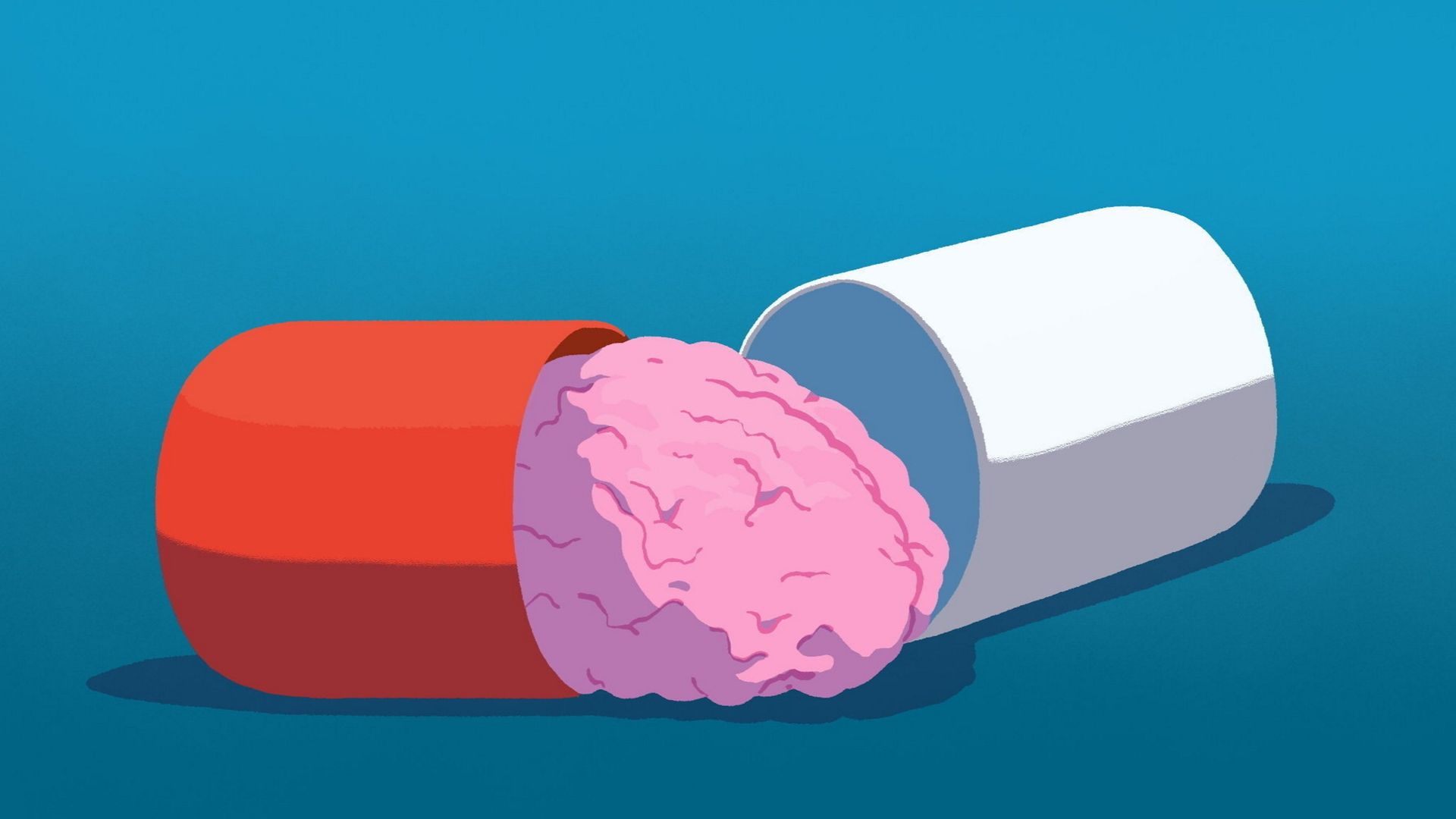尊敬的用户您好,这是来自FT中文网的温馨提示:如您对更多FT中文网的内容感兴趣,请在苹果应用商店或谷歌应用市场搜索“FT中文网”,下载FT中文网的官方应用。

The writer is the director of mental health at the Wellcome Trust
本文作者是惠康基金会(Wellcome Trust)精神健康主任
Psychiatric medication is controversial. While most recognise that mental health problems are caused by a tangle of psychological, social and biological factors, debates about solutions are polarised between those advocating for addressing environmental factors and those more interested in medication.
精神药物治疗饱受争议。虽然大多数人都认识到精神健康问题是由心理、社会和生物因素综合造成的,但关于解决方案的争论却呈现两极分化:有人主张解决环境因素,有人则对药物治疗更感兴趣。
This point of contention is part of the reason that, for too many years, progress in psychiatric pharmaceutical development has been at a near standstill. Drugs work by acting on a “target” — often a protein or a receptor — to produce a therapeutic effect. Innovation in drug development is usually driven by the discovery of new targets. However, the vast majority of mental health medicines prescribed today have the same targets as their pre-1960 prototypes. Most of them were discovered by serendipity; we know surprisingly little about their underlying mechanisms.
多年来,精神科药物研发的进展几乎停滞不前,其部分原因就在于这一争论。药物通过作用于“靶点”——通常是蛋白质或受体——来产生治疗效果。新靶点的发现通常会推动药物研发的创新。然而,目前绝大多数精神疾病处方药的靶点与1960年以前的原型药物大致相同。其中大多数都是偶然发现的;我们对其基本机制知之甚少。
These treatments are far from perfect. Half of adults with depression don’t improve with antidepressants or antipsychotics. Some experience negative side effects, or difficulties in stopping the medication; there is much debate about their use in children and young people.
这些治疗方法远非完美。半数患有抑郁症的成年人在服用抗抑郁药或抗精神病药后病情没有好转。有些人会出现副作用,或难以停药;关于这些药物在儿童和青少年中的使用也存在很多争议。
So why is it so hard to develop new medications that work?
那么,为什么研发有效的新药如此困难呢?
The complexity of the brain is one challenge. Another is the lack of good animal models — for most areas of medicine an important early step for new treatments — because studying subjective experiences such as depression or delusions in a mouse poses obvious challenges.
大脑的复杂性是挑战之一。另一个挑战是缺乏良好的动物模型——对于大多数医学领域来说,动物模型是新疗法的重要早期步骤——因为在小白鼠身上研究抑郁或妄想等主观体验显然是一项挑战。
Then there’s the issue of how mental health conditions are categorised and understood. With no validated biomarkers — scans, blood tests or other means to identify the precise condition — psychiatry can look like infectious disease before we had germ theory.
还有一个问题是如何对精神疾病进行分类和理解。由于没有经过验证的生物标志物——扫描、血液检查或其他方法来识别确切的病症——精神病学看起来就像我们还没有细菌理论之前的传染病。
And for those possible medicines that look promising, many don’t work in practice. On average, 73 per cent of psychiatric drug candidates fail to make it through Phase 2, the stage of clinical development that involves testing if a drug works well enough to warrant further investigation.
对于那些看起来很有希望的药物,很多在实践中并不起作用。平均而言,73%的精神科候选药物未能通过第二阶段,即临床开发阶段,该阶段涉及测试药物是否有效,是否值得进一步研究。
Moreover, to deliver strong results from clinical trials, researchers must be able to recruit large numbers of patients. This is far from easy — the complex systems through which people find clinical trials are often badly suited to engage people with mental health conditions. One researcher told us that they were only able to recruit 30 of their 700 required patients over a three-year period.
此外,要想从临床试验中获得有力的结果,研究人员必须能够招募到大量患者。这绝非易事——复杂的临床试验往往不适合患有精神疾病的患者参与。一位研究人员告诉我们,他们在三年时间里只招到了30名志愿者,而临床试验需要700名。
This environment means private funding for mental health drug development is challenging — such risks concern investors. The situation is a catch-22: a scarce funding landscape limits researchers’ opportunities to assess promising targets and drug candidates. This in turn makes success less likely and investment riskier.
这种环境意味着为精神疾病药物研发提供私人资金具有挑战性——其风险令投资者担忧。这种情况就像一个“陷阱”:资金稀缺限制了研究人员对有前景的目标和候选药物进行评估的机会。这反过来又降低了成功的可能性,进而增加了投资风险。
So how do we stimulate innovation in a neglected field? We could look to obesity as an example, where significant investment took an area making very slow progress to one with a huge uplift in discovery and resulting drug development.
那么,我们该如何激励被忽视领域的创新呢?我们可以以肥胖症为例,在该领域,大量投资使一个进展非常缓慢的领域在发现和药物开发方面取得了巨大进步。
There are signs that we are at the start of a new wave of discovery in psychiatric medications. The first new type of antipsychotic in over 50 years was approved for use in the US last year. Welsh biotech Draig Therapeutics recently announced they had secured $140mn to develop their new depression treatment. The use of AI and other large data approaches have the potential to transform the field. There’s an increased focus on unpacking existing medications such as antidepressants to understand how they work and how they can be improved.
有迹象表明,我们正处于精神药物新发现浪潮的起点。去年,美国批准了50多年来第一种新型抗精神病药物。威尔士生物技术公司Draig Therapeutics最近宣布,该公司已获得1.4亿美元的资金,用于开发新型抑郁症治疗药物。人工智能和其他大数据方法的使用有可能改变这一领域。人们越来越关注对现有药物(如抗抑郁药)的解读,以了解它们是如何起作用的,以及如何加以改进。
Wellcome are in the process of joining a large public-private consortium that has announced funding for scientists to hunt for biomarkers for conditions including mental illnesses. This could give us rich insights into the biology behind mental health conditions and galvanise innovative treatments.
惠康正在加入一个大型公私财团,该财团已宣布为科学家提供资金,以寻找包括精神疾病在内的各种疾病的生物标志物。这可以使我们对精神健康状况背后的生物学有更深入的了解,并促进创新疗法。
To those who do not believe that pharmaceuticals are a way forward, I say I believe there can be no either/or in mental health. While we must rigorously examine non-pharmacological interventions, including digital and large-scale social policy interventions, we also need to explore potential medicines.
对于那些不相信药物治疗是解决之道的人,我想说,在精神健康问题上,不能非此即彼。尽管我们必须严格研究非药理干预措施,包括数字化和大规模的社会政策干预措施,但我们也需要探索潜在的药物。
As a philanthropic organisation, Wellcome can shoulder some of the considerable risk involved in psychiatric drug development. But it is only with commitment from investors, industry, scientists and people with lived experience that we will find new medications that will transform the lives of millions across the globe for the better.
作为一家慈善机构,惠康可以承担精神科药物开发过程中的部分巨大风险。但是,只有在投资者、业界、科学家和有生活经验的人的共同努力下,我们才能找到新药,改善全球数百万人的生活。